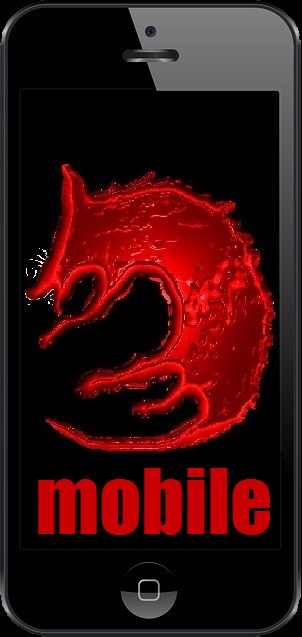Liar's Dice
Also Known as...
Bluff, Deception Dice, Diception, Dudo, Cachito
Similar to...
Mexican
Note
There are at two major versions of liar's dice. In both versions, dice are rolled in a concealed fashion and bids are made about the result of the roll. Players must either raise the bid or challenge the previous bid in turn. The less popular version, "Individual Hand", is found HERE. The more popular, "Common Hand" is described below.
Players
2+
Equipment
5 Dice per Player, 1 Cup per Player (Not for Drinking), Booze
Intoxication Level
Low to Medium
Setup
In the more popular "common hand", each player has a set of dice, all players roll once, and the bids relate to the dice each player can see (their hand) plus all the concealed dice (the other players' hands).
The game originated in South America, Grew in popularity in Spain, and is most popular in China, where most bars and clubs have dice and cups stationed at tables.
It is a game of odds, interpersonal skills, and strategy. A Smart Liar's Dice player will use his dice and the probability of the same face values being among the other players. The expected quantity of each face value without wilds is 1/6, with 1s being wild it is 1/3. Therefore, when 3 Players (15 dice) are in play and wilds are used, the expected quantity is 5. The chances of a bid of 5 being correct are about 59.5%, while the chances of a bid of 8 being correct are only about 8.8%. In a four player game, if a player has three 3's under his cup, can expect an average of 5 other 3's among the remaining players.
Playing Liar's dice also involves many subtleties and interpersonal skills similar to other bluffing games like Poker. Playing them well requires the ability to deceive and detect an opponent's deception. Players will often bluff a bid, meaning the may make a bid they think they can't make in order to provoke other players to overbid in that same face value if they are strong in it.
Five six-sided dice are used per player, with dice cups used for concealment.
Gameplay
Each player shakes their cup and then turns it upside down so that their cup is covering their dice. The players are allowed to look at the dice they rolled but not at any other player's dice.
The first player then makes a bet. Bets are given in the form of a quantity of dice and then a face value (three 2s or five 4s) The goal is to make a bet where the total number of dice of a stated face value value are equal to or less than the number bet. 1s are considered wild and players may not bet on the number of 1s at the table.
The player to the left of the starting player may now raise the bet or challenge.
If the player raises the bet then they must make a bet with either a higher amount of die (three 4s to four 2s) or an equal amount with a higher face value (three 4s to three 5s). The player may increase the number of dice or the face value as much as they want (three 4s to six 2s). Play then continues with the player to the left of the raiser.
The player has two choices during his turn: make a higher bid, or challenge the previous bid. Raising the bid means either increasing the quantity, or the face value, or both, according to the specific bidding rules used.
If the player challenges then all the players lift their cups.
If the number of dice at the table with the face value the player bet (plus 1s which are wild) is greater than or equal to the number bet then the player who bet wins and the challenger must take three drinks and loses one of their dice for the rest of the game. For example four 3s were bet and the bettor is challenged, everyone reveals their dice and there are five 3s and two 1s at the table, the bettor wins.
If the number of dice at the table with the face value the player bet (plus 1s which are wild) is less than the number bet then the challenger wins and the bettor must take three drinks and loses one of their dice for the rest of the game. For example four 3s were bet and the bettor is challenged, everyone reveals their dice and there are three 3s at the table, the challenger wins.
Everyone then re-fills their cup with their remaining dice, shakes their cup and then turns it upside down so that their cup is covering their dice. Betting begins with the challenger who just won.
The game continues until only one player has dice left.
No Turns (Variation A)
Some play that instead of the next player being the only one who can challenge the bid, any player may challenge a bid at any time without waiting turns.
Re-Roll (Variation B)
Some play that a player may elect to choose one or more dice of the same face value from under his cup, place them outside the cup in view of the other players, re-roll the remaining dice, and use only the ramining dice for a new bid.
Passing (Variation C)
Some play that When a player has no two dice with the same face, he may choose to pass once in a game round. The Passing player does not have to show his dice unless he is challenged. When a player passes, the bid won't be raised. The next player can raise the original bid, or call the Pass. By doing so, he challenges the claim that the passing has no two dice with the same face. This is especially helpful to players with only a couple dice left.
Exactly (Variation D)
In this variation, Instead of raising or challenging, the player can claim that the current bid is exactly correct. If the number is higher or lower, the claiming player loses to the previous bidder, but if they are correct, they win.
Stanford (Variation E)
This variation is played with one set of dice. Players can reveal dice or remove them from view, as well as roll them inside or outside of the box.
Search number of players, equipment, or style of game with the Drinking Game Search Tool
Or browse the Alphabetical List of Drinking Games
©partypossum.com



